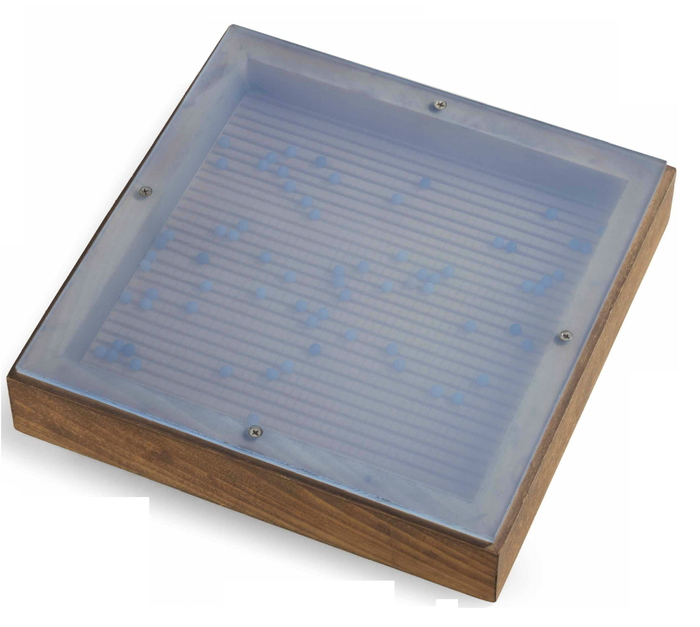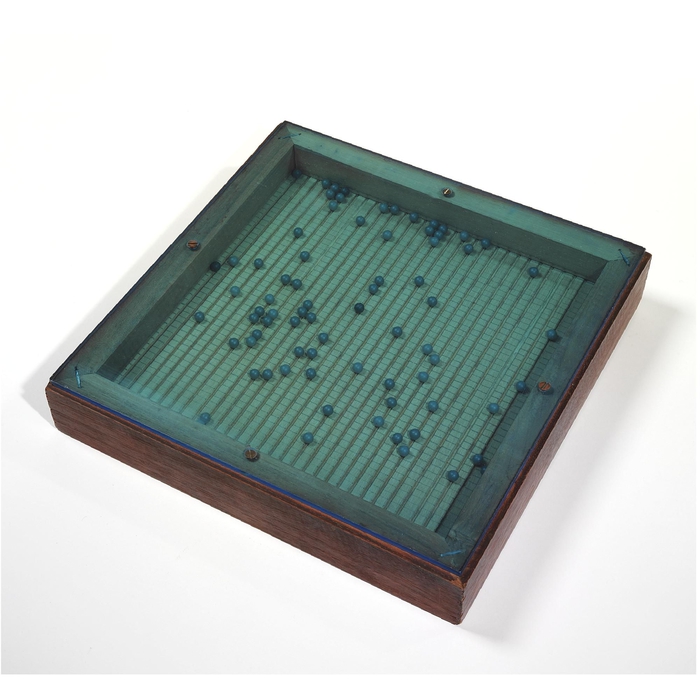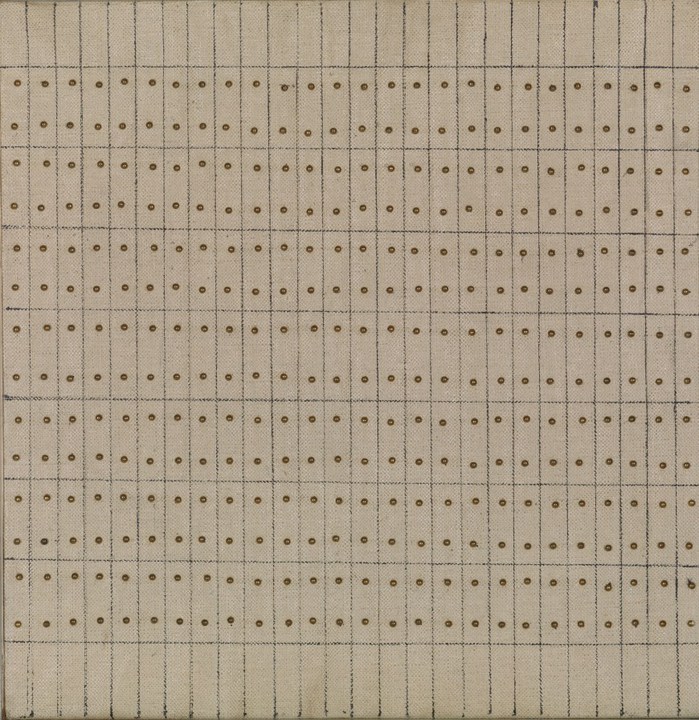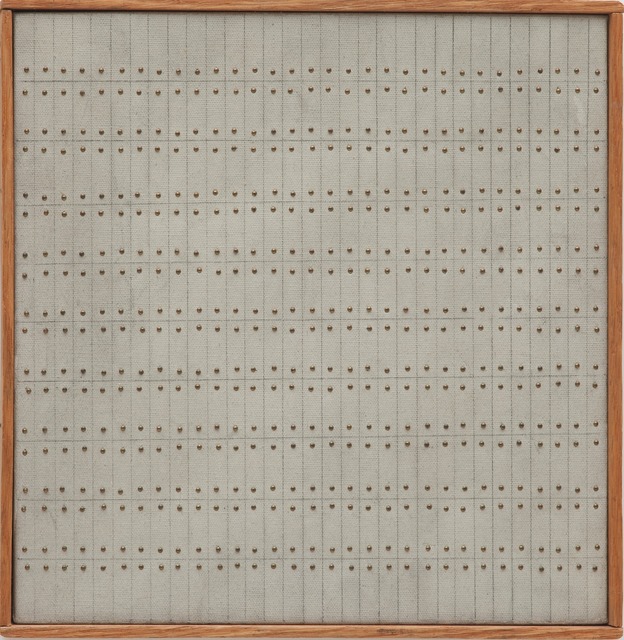
Agnes Martin, The Wave, 1963, being sold at Christie’s next week
I am unexpectedly interested in Agnes Martin’s toy/sculpture/object, The Wave, which is coming to auction next week at Christie’s. The Wave is one of five such objects, a small (11×11 inch) shadowbox with tinted plexiglass, in which dozens of blue beads roll across a grid incised in the wooden base, making a roiling sound of the title. The first was created for a Christmas 1963 group show organized by Jock Truman at the Betty Parsons Gallery. It was listed for $300.
This example has Robert Elkon in the provenance, which suggests it was purchased, not in the Toys show, but later. The late owner Daniel Dietrich II also bought some Martin paintings from Elkon, her dealer at this foundational moment in her career.

Robert Elkon’s Agnes Martin The Wave, which his family sold at Sotheby’s in 2007.
Other examples of The Wave went to Elkon himself, Parsons herself, and Lenore Tawney, which leaves just one unaccounted for. But that tight grouping makes them very much a friends & family-type object.

Agnes Martin, Little Sister, 1962, oil, ink, brass nails on canvas over wood, around 10×10 in.
At first it felt like a novelty, and the novelty show it was created for didn’t help. But sitting with it (in my tabs, at least), The Wave feels a lot closer to Martin’s work than I thought, especially her work in 1962-3. She had found her 72×72-inch format by then, but she was also still producing small paintings, too, 12×12-inch grids of pencil on canvas. A couple of them also use brass nail heads as dots among her dashes. The Guggenheim has one of these works from 1962 called Little Sister [above].

Another similar 1962 work, Untitled, 12x12in., at the Museum of Contemporary Art San Diego, is shown on Artsy with the slat frame. The San Diego connection is interesting but probably irrelevant, at least from Martin’s perspective, but not mine. I am sure that seeing Robert Irwin’s handheld paintings from the late 1950s at the Hirshhorn led me to notice The Wave which I don’t remember seeing in either Whitney 1992 or 2015. [Is there really one in the Tate/LACMA show? Or is it just in the catalogue?]
Anyway, the premise of The Wave as a plaything made for a show for kids belies the respect Martin had for children, who she regularly praised for their openness to inspiration. Inspiration was the constant goal of Martin’s artmaking, and the experience she sought to facilitate through her work, and intellect and the chaos of the world were the constant obstacles. Without any evidence beyond her friend and dealer Arne Glimcher’s recollection that she “meditated daily,” I can now totally picture Martin in her studio, rolling The Wave back and forth in her hands until she felt ready to lose herself in painting.
The ocean is deathless
The island rise and die
Quietly come, quietly go
A silent swaying breath
I wish the idea of time would drain
out of my cells and leave me
quiet even on this shore.
May 10, 2016, Lot 26 B, The Wave, 1963, est. $400,00 – 600,00 [christies.com]
The Archives of American Art has digitized most of the Parsons Gallery’s records about “Toys By Artists” [aaa.si.edu]
[note: That last quote is usually attributed to Martin, and she did include it in a note she sent to Glimcher. But at least one source attributed it to the critic Jill Johnston. Johnston was a friend of Martin in NY in the 60s; both were gay, also schizophrenic, which is not necessarily where I thought to end this post.]
Skip to content
the making of, by greg allen
